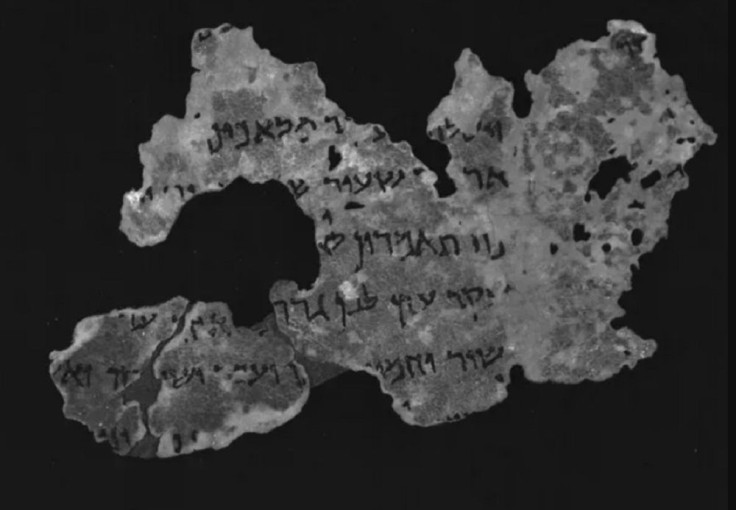Dead Sea Scrolls In Washington Museum Found To Be Fake

KEY POINTS
- The Dead Sea scroll fragments at a museum in Washington turned out to be fake
- Evidence suggests that the forgeries were deliberately made
- The culprits behind the forgeries are, so far, unknown
After conducting a battery of tests, a team of researchers discovered that all of the Dead Sea Scroll fragments at a museum in Washington D.C. are actually fake. The evidence suggests that the supposed artifacts were deliberately made for the purpose of deception.
Dead Sea Scrolls
Since the Dead Sea scrolls were discovered by a Bedouin shepherd in the Qumran Caves in 1946, they have been regarded as ancient Jewish manuscripts and have since been housed in the Shrine of the Book at the Israel Museum.
Sometime after 2002, the Museum of the Bible in Washington D.C. purchased 16 fragments of the Dead Sea scrolls and 13 of them were published by a team of scholars in "Dead Sea Scrolls Fragments in the Museum Collection" in 2013. At the time, the fragments had not been scientifically examined to determine their authenticity.
Since the publication, many scholars expressed their concerns that the fragments might be fake, especially since many forgeries were already in the market at the time. In fact, other institutions that acquired fragments from the same collection found that they were not actually authentic.
In 2017, the Museum of the Bible exhibited their collection of Dead Sea scroll fragments and, soon after, several of them were found to be fake by Germany's Federal Institute for Materials Research. As a result, the Museum of the Bible contacted Art Fraud Insights, LLC to obtain scientific evidence that would either confirm or refute the fragments' authenticity.
Deception
To determine whether the fragments are authentic or not, Art Fraud Insights conducted exhaustive imaging and scientific analysis between May and October 2019. Unfortunately, the examinations proved that none of the museum's fragments were authentic. Furthermore, the team even uncovered evidence that the fragments were deliberately made for the purpose of mimicking the original Dead Sea scrolls.
Specifically, the material of the museum's fragments did not match the original Dead Sea scrolls' material and, modern ink was used to write the words. The fragments also appeared to be covered in dust similar to dust in the Qumran Caves. All in all, the evidence suggests that the people who made the forgeries went to great lengths to make them look authentic.
So far, the culprits behind the forgeries are still unknown. However, the Museum of the Bible is hoping that their efforts to find out the truth will also uncover the truth about the other forgeries, including who may be behind them.
"Notwithstanding the less than favorable results, we have done what no other institution with post-2002 DSS fragments has done," Museum of the Bible Chief Curatorial Officer Dr. Jeffrey Kloha said. "The sophisticated and costly methods employed to discover the truth about our collection could be used to shed light on other suspicious fragments and perhaps even be effective in uncovering who is responsible for these forgeries."
© Copyright IBTimes 2024. All rights reserved.






















